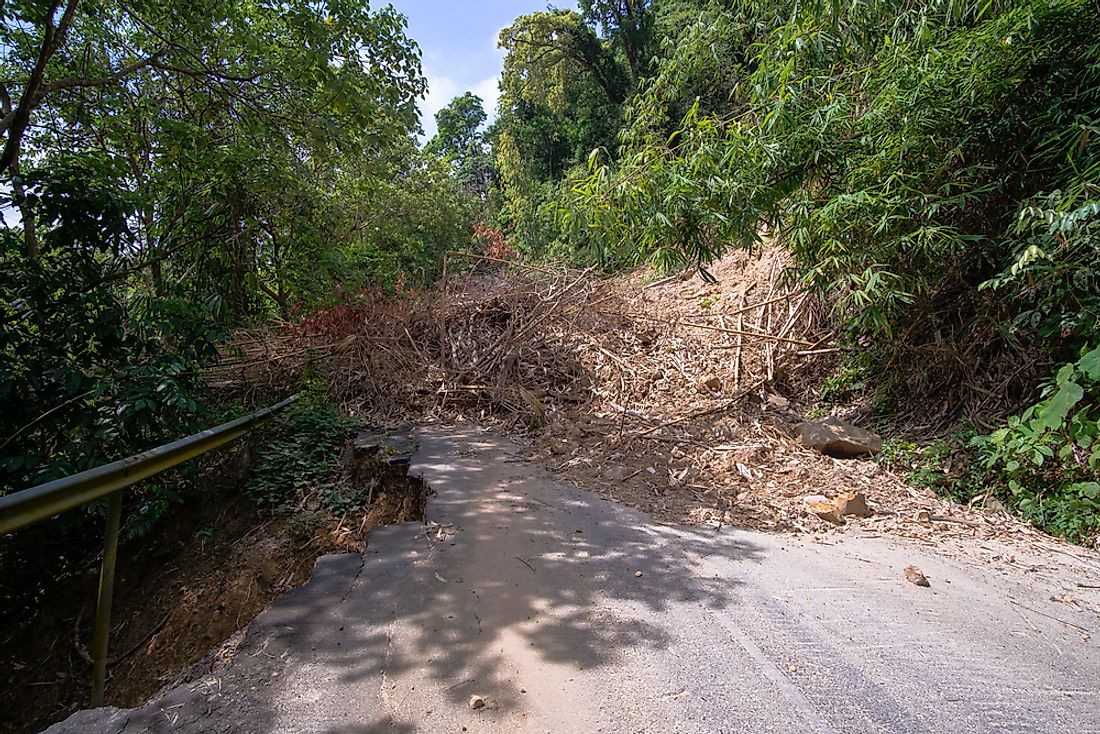What Is Mass Wasting?

Mass wasting, sometimes known as slope or mass movement, is the large movement of soil, rock, and debris downhill because of the force of gravity. It is a natural phenomenon initiated by gravity but made possible by a combination of several factors. Modern geography has enlarged the definition of mass wasting to include natural erosion and the submerging of the earth's surface. Mass wasting occurs along slopes such as hill or mountain sides and can result in significant alteration of the surrounding terrain. Mass wasting is a form of landslide.
Causes of Mass Wasting
Several factors cause mass wasting besides gravitational pull. They include:
Volcanic Activities
Volcanic eruptions spew hot magma and mud that melt the snow at the top of the mountain to form mud sludge. The sludge loosens the soil at the slope of the mountain that begins to give way. The longer the eruptions takes, the more the mass wasting occurs.
Earthquake Shocks
Earthquakes result in the down flow of already weakened portions of mountains and hills. Drenched slopes, slopes with no vegetation, and extremely steep slopes are at a high risk of mass wasting by earthquakes. Typically, powerful earthquakes result in more mass wasting.
Landslides
Landslides are the most common causes of mass wasting. They result in the movement of earth, rock, and debris downhill. Landslides can be massive, small, high speed, or slow. Water, wind, and earth tremors can result in landslides that lead to mass wasting.
Mudslide
Mudslides or debris flow occur after a cloudburst or torrential rainfall. Water quickly saturates the soil creating an unstable sludge that begins to flow as a river of mud. Mudflow can also occur when the snow melts quickly and socks up the side of the mountain. The difference between a mudflow and a landslide is that mudflows move as liquefied material wild landslides move as a block of earth.
Types of Mass Wasting
Rockslides and Rockfalls
A rockslide occurs when a mass of bedrock in a slanted surface moves rapidly along a fault. The slide results in the shifting of rocks that destabilize the surrounding environment leading to a rock avalanche.
Debris Flows
Debris flows are the common types of mass wasting. This form of mass wasting involves the movement of earth downslope as a single block or as mudflow. The flowing debris moves rocks, trees, houses, and vehicles along the path.
Soil Creep
Soil creep is the mass movement of the earth over a long time. It is caused by the slow movements of rocks and soil in different directions because of gravity. The movement is proportional to the slope. Trees and shrubs remain perpendicular, and it is hard to notice the mass wasting using the naked eye.











